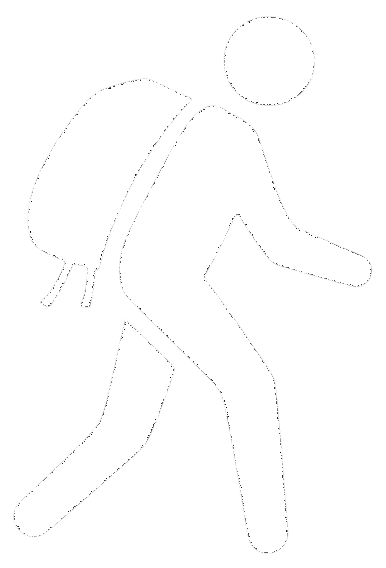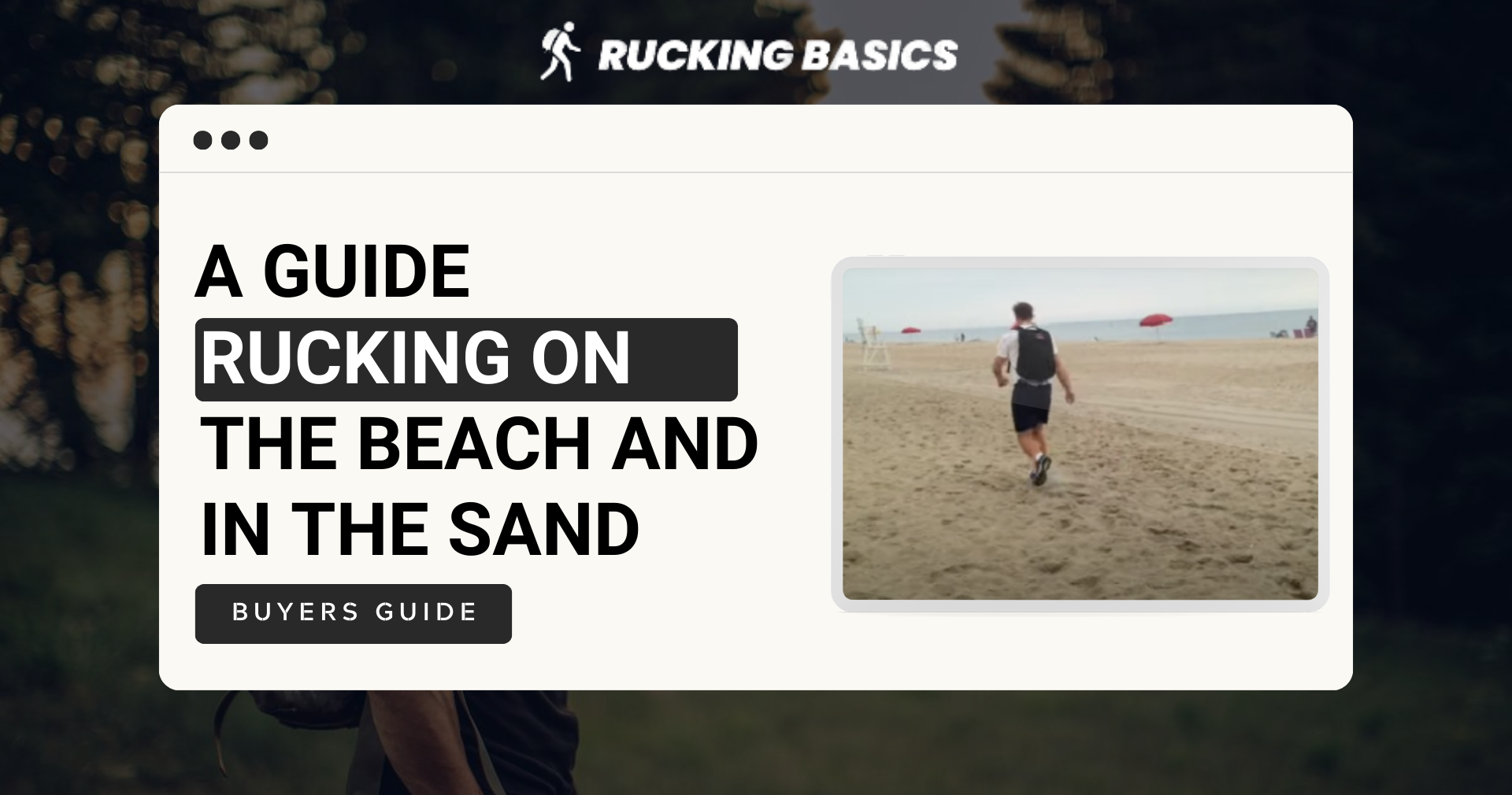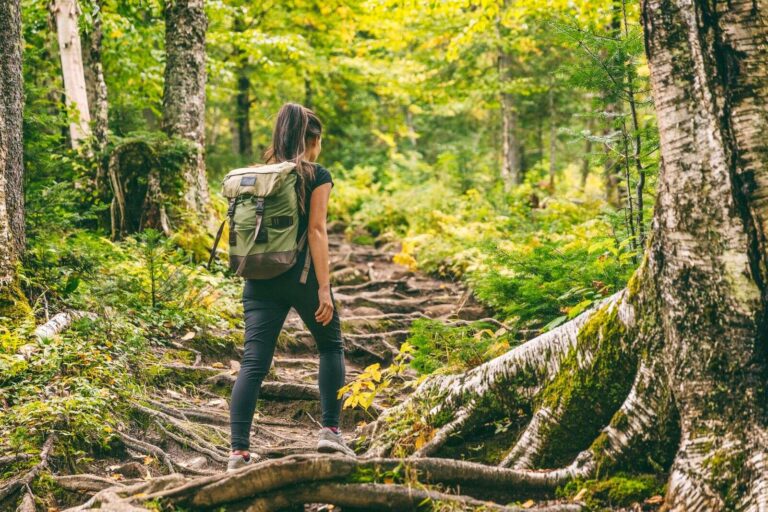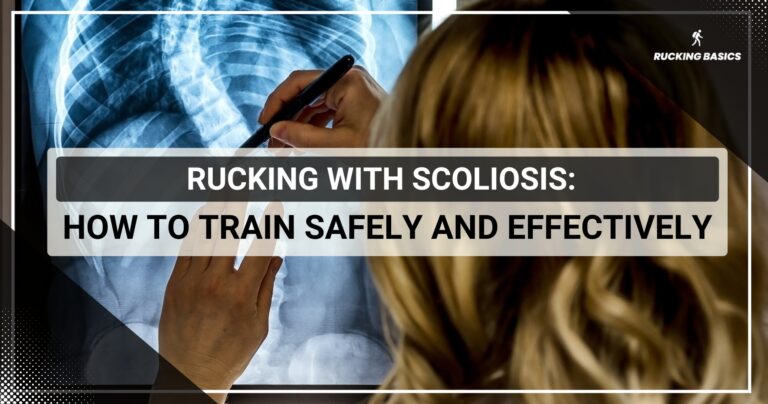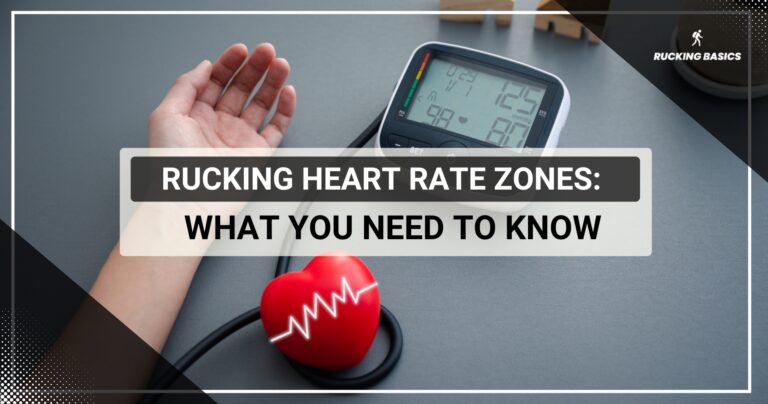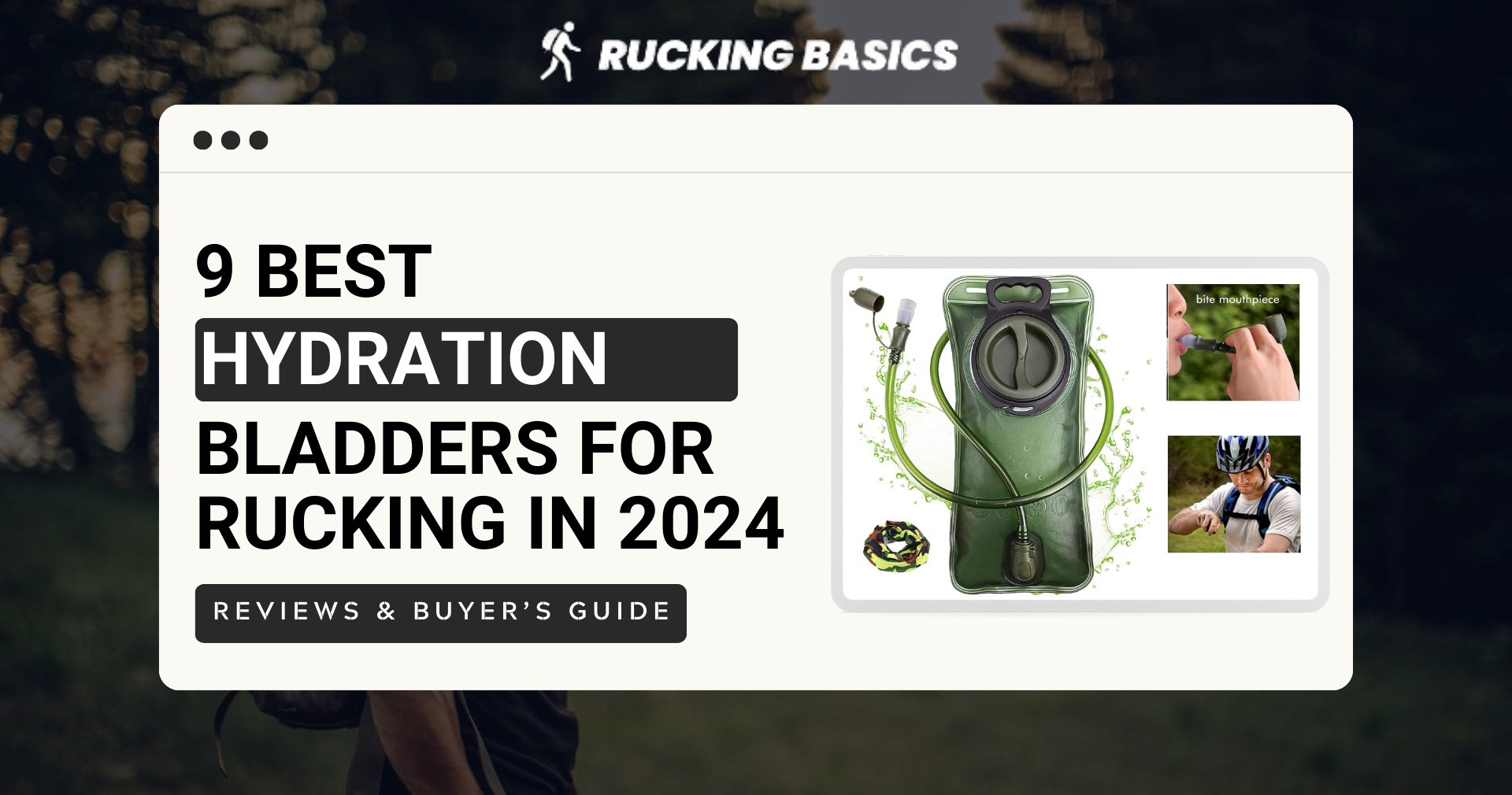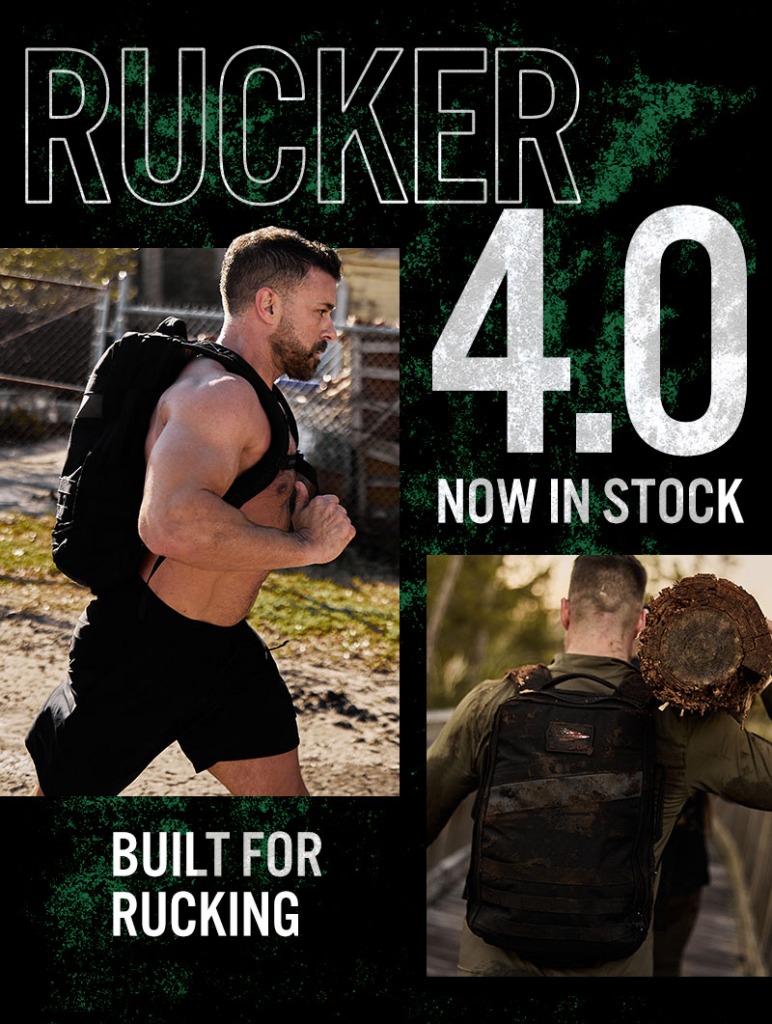For me, rucking on the beach was never about passing a test of ultimate endurance. It was more of an adventure that combined the tranquility of the sea with the rigor of weighted walking.
This unique blend of fitness and nature draws from the military’s rigorous training regimen, offering an accessible way to improve general fitness, strength, and mental resilience. Whether you’re part of a ruck club, training for a GoRuck event, or looking to enhance your workout routine, rucking on the beach provides a distinctive challenge thanks to the soft sand and scenic backdrop.
Let’s jump into the best tips for rucking on the beach and some essential benefits you should be aware of.
How to Prepare Yourself for Rucking on the Beach
Here are the essentials to prepare yourself for rucking on the beach and in sand to make sure you are safe and get the most out of the activity.
Ruck, Run, or Walk Barefoot in the Grass
I found through my experience that transitioning to barefoot exercises on softer surfaces like grass is an excellent way to prepare your feet for the unique challenges of rucking on the beach. This practice not only helped me strengthen the muscles in my feet but also enhanced my proprioception – my body’s ability to sense movement, action, and location.
It’s a crucial adaptation. It will allow your feet to handle the uneven and shifting terrain of soft sand better. I advise starting with short distances and gradually increasing as your comfort and strength improve, focusing on the sensation of each step and the natural movement of your feet.
Try to Ruck on the Beach the Day Before the Ruck Event
Acclimating yourself to the beach environment before the main event is beneficial for both your mind and body. A preparatory ruck along the same route or terrain has proven valuable in providing insights into how the sand conditions affect your pace, endurance, and gear setup.
You can adjust your strategy accordingly, such as altering your pacing, planning for more frequent breaks, or reevaluating the weight distribution in your pack. This trial run will also help you mitigate any surprises that could arise during the actual event, ensuring you’re as prepared as possible.
Strengthen Your Soleus and Gastrocnemius
The soleus and gastrocnemius muscles, located in your calves, play a pivotal role in propelling you forward, especially on challenging surfaces like sand. You should strengthen these muscles to improve your rucking performance and reduce the risk of injury.
Incorporate calf raises, toe walks, and heel drops into your training regimen to target these areas. For added resistance, perform these exercises with your ruck on. Strengthening these muscles will ensure better stability and push-off power, and these are essential for navigating the demanding beach terrain.
Shuffle Toe-First With the Regular Heel Technique
Altering your walking technique to a shuffle toe-first approach can be particularly effective on sand. This method will help you distribute your body weight more evenly across your foot, reducing the energy expenditure with each step.
Practicing this technique involves leading with your toe rather than your heel, which is the conventional approach on harder surfaces. It minimizes the sinking feeling in the sand, allowing for a smoother transition and maintaining momentum.
You should integrate this technique into your training sessions before hitting the beach. This can make a significant difference in your endurance and speed.
Use Proper Rucking Gear for the Beach
Selecting the right gear is crucial for a successful beach rucking experience. Your rucksack should be comfortable, with adjustable straps to ensure a snug fit that prevents chafing. Water-resistant materials are a plus, protecting your belongings from sea spray or unexpected weather.
The weight in your ruck should be evenly distributed to avoid imbalances that could lead to injury. Additionally, consider gear that’s reflective of your commitment to the activity, such as patches from previous ruck events or symbols representing the veterans, Marine Corps, or special forces roots that inspire the rucking community.
Proper footwear is also essential; opt for shoes with a good grip and support that are suitable for sand yet allow for easy cleaning post-ruck.
For a detailed breakdown of high-quality footwear options, this GORUCK shoes review provides insights into durability, comfort, and performance, making it easier to choose the perfect pair for your beach adventures.
Rucking on the Beach Benefits
According to the study from PubMed Central, the scientific literature has reported that sand walking increases the cost of energy, reduces walking velocity, improves lower limb strength, and increases relative muscular activity to maintain balance as compared to a flat surface [1].
One of the most magical aspects of rucking on the beach isn’t just the physical gains. It is actually the way the environment speaks to your soul. When you’re out there, with the weight on your back and your feet sinking slightly with every step, you’re doing more than just building endurance and strength.
Beach rucking in colder weather can be an entirely different experience. The cool sea breeze and crisp air offer will require you to adjust your gear and strategy. Preparing for rucking in cold weather ensures you stay comfortable while tackling the sandy challenge, even when temperatures drop.
The sand adds a natural resistance that amplifies your workout, challenging your muscles in ways that firm ground just can’t match. But there’s something else—something almost spiritual—about rucking alongside the ocean. The rhythmic crash of waves, the endless horizon, and the fresh salty air offer a profound sense of peace and mental clarity.
It’s like the beach is your training partner, pushing you to dig deeper while simultaneously soothing your spirit. This balance between effort and serenity makes beach rucking not just a workout for the body but also a meditation for the mind.
Rucking on the Beach Exercises
Incorporate exercises like squats, lunges, and burpees during your ruck to maximize the fitness benefits. These exercises, combined with the natural resistance of sand, amplify strength training and cardiovascular health.
Frequently Asked Questions
Does Walking on the Beach Build Muscle?
Walking on the beach can indeed build muscle, particularly in the lower body, due to the increased resistance provided by sand. This resistance forces muscles to work harder than they do on firmer surfaces, promoting strength and endurance development in the calves, quads, and glutes.
Is Walking On Sand Bad for Your Back?
Walking on sand is not inherently bad for your back; in fact, it can be beneficial due to the softer surface reducing impact on the spine compared to harder surfaces like concrete. However, proper posture and gradual adaptation to the uneven surface are crucial to avoid strain or injury.
Is Walking on Sand Better Than Concrete?
Walking on sand is generally considered better than concrete for physical fitness and joint health due to the lower impact on the joints and the increased effort required to move, which enhances the workout intensity. The softness of sand absorbs more force, reducing stress on the knees and ankles during exercise.
Wrapping Up
Rucking on the beach, from my experience, transcends typical workouts, blending fitness with the healing nature of the sea. It’s a challenge that rewards not just with increased strength and endurance but also with mental clarity and a deeper connection to nature.
For anyone looking to elevate their fitness routine while finding peace and resilience, the sandy shores offer an unparalleled gym. Embrace this journey with an open heart, proper preparation, and a willingness to push beyond your limits. The beach awaits, ready to transform not just your body but your soul.
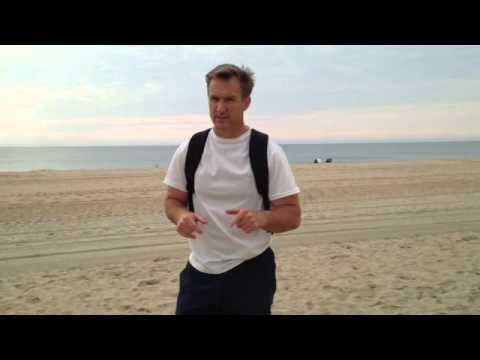
References:
- Seyam M, Kashoo F, Alqahtani M, Alzhrani M, Aldhafiri F, Ahmad M. Effect of Walking on Sand with Dietary Intervention in OverweightType 2 DiabetesMellitusPatients: A Randomized Controlled Trial. Healthcare (Basel). 2020;8(4):370. Published 2020 Sep 29. doi:10.3390/healthcare8040370
